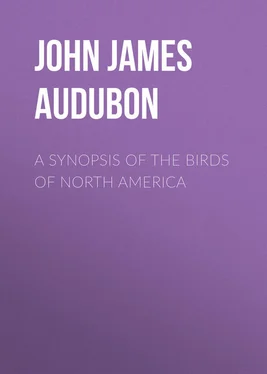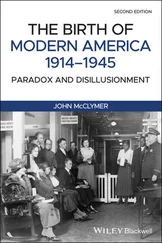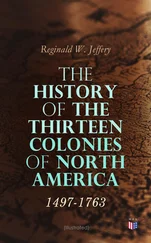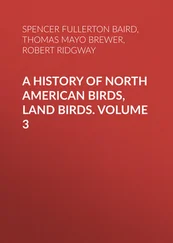John Audubon - A Synopsis of the Birds of North America
Здесь есть возможность читать онлайн «John Audubon - A Synopsis of the Birds of North America» — ознакомительный отрывок электронной книги совершенно бесплатно, а после прочтения отрывка купить полную версию. В некоторых случаях можно слушать аудио, скачать через торрент в формате fb2 и присутствует краткое содержание. Жанр: foreign_antique, foreign_prose, на английском языке. Описание произведения, (предисловие) а так же отзывы посетителей доступны на портале библиотеки ЛибКат.
- Название:A Synopsis of the Birds of North America
- Автор:
- Жанр:
- Год:неизвестен
- ISBN:нет данных
- Рейтинг книги:5 / 5. Голосов: 1
-
Избранное:Добавить в избранное
- Отзывы:
-
Ваша оценка:
- 100
- 1
- 2
- 3
- 4
- 5
A Synopsis of the Birds of North America: краткое содержание, описание и аннотация
Предлагаем к чтению аннотацию, описание, краткое содержание или предисловие (зависит от того, что написал сам автор книги «A Synopsis of the Birds of North America»). Если вы не нашли необходимую информацию о книге — напишите в комментариях, мы постараемся отыскать её.
A Synopsis of the Birds of North America — читать онлайн ознакомительный отрывок
Ниже представлен текст книги, разбитый по страницам. Система сохранения места последней прочитанной страницы, позволяет с удобством читать онлайн бесплатно книгу «A Synopsis of the Birds of North America», без необходимости каждый раз заново искать на чём Вы остановились. Поставьте закладку, и сможете в любой момент перейти на страницу, на которой закончили чтение.
Интервал:
Закладка:
125. 1. Parus bicolor, Linn. Tufted Titmouse. – Crested Titmouse. Great Chicadee
Plate XXXIX. Male and Female.
Bill very stout; feathers of the upper part of the head elongated into a crest; tail long, slightly rounded; upper parts leaden-blue, forehead black, lower parts greyish-white, the sides light red.
Male , 61/2, 9.
From Texas, where it breeds, to the Fur Countries, generally distributed eastward of the Rocky Mountains. Resident in the middle, southern, and western districts. Abundant.
Crested Titmouse, Parus bicolor, Wils. Amer. Orn. v. i. p. 187.
Parus bicolor, Bonap. Syn. p. 100.
Tufted Titmouse, Parus bicolor, Nutt. Man. v. i. p. 236.
Crested Titmouse, Parus bicolor, Aud. Orn. Biog. v. i. p. 199; v. v. p. 472.
126. 2. Parus atricapillus, Linn. Black-cap Tit. – Black-cap Titmouse, or Chicadee
Plate CCCLIII. Fig. 3. Male. Fig. 4. Female.
Bill moderately stout; tail long, emarginate, and rounded. Upper part of the head and hind neck, with a large patch on the fore neck, black; cheeks and sides of the neck white; back yellowish-grey; quills and tail-feathers dark greyish-brown, margined with bluish-white; the secondaries broadly edged with white; lower parts pale yellowish-red, the breast white.
Male , 51/8, 81/4.
From Maryland eastward and northward to Lat. 65°. In Kentucky during winter. Never in the southern parts.
Black-capt Titmouse, Parus atricapillus, Wils. Amer. Orn. v. i. p. 134.
Parus atricapillus, Bonap. Syn. p. 100.
Black-capt Titmouse, Nutt. Man. p. 241.
Black-capt Titmouse, Parus atricapillus, Aud. Orn. Biog. v. iv. p. 374.
127. 3. Parus Carolinensis, Aud. Carolina Tit
Plate CLX. Male and Female.
Bill very short, moderately stout; tail rather long, emarginate, and rounded. Upper part of the head and hind neck, with a large patch on the fore neck, black; cheeks and sides of the neck greyish-white; back yellowish-grey; quills and tail-feathers dark greyish-brown, margined with bluish-white, secondaries not conspicuously; lower parts greyish-white, tinged with yellow. This species is very similar to the last, but much inferior in size.
Male , 41/4, 6.
Breeds from Texas to New Jersey. Rather abundant. Resident.
Carolina Titmouse, Parus Carolinensis, Aud. Orn. Biog. v. ii. p. 341; v. v. p. 474.
128. 4. Parus Hudsonicus, Lath. Hudson's Bay Tit
Plate CXCIV. Male, Female, and Young.
Bill short, moderately stout; tail long, emarginate, and considerably rounded. Upper parts dull light brown, tinged with grey; fore neck black; cheeks and sides of the neck white; breast and abdomen white, sides light yellowish-brown.
Male , 5, 7.
Northern parts of Maine, during winter. Breeds from New Brunswick to Labrador and Hudson's Bay. Common. Migratory.
Parus Hudsonicus, Lath. Ind. Orn. v. ii. p. 566.
Hudson's Bay Titmouse, Aud. Orn. Biog. v. ii. p. 543.
129. 5. Parus rufescens, Towns. Chestnut-backed Tit
Plate CCCLIII. Fig. 1. Male. Fig. 2. Female.
Bill moderately stout; tail rather long, emarginate, scarcely rounded; upper part of head and hind neck dark brown, fore neck of a deeper tint of the same; cheeks and sides of neck white; back, rump, and sides of the body under the wings bright chestnut; the rest of the lower parts greyish-white.
Male , 41/2, wing, 23/8.
Columbia River. Abundant. Resident.
Parus rufescens, Chestnut-backed Titmouse, Towns. Journ. Acad. Nat. Sc. Philadelphia, v. vii. p. 190.
Chestnut-backed Titmouse, Parus rufescens, Aud. Orn. Biog. v. iv. p. 371.
130. 6. Parus minimus, Towns. Chestnut-crowned Tit
Plate CCCLIII. Fig. 5. Male. Fig. 6. Female.
Upper mandible with its outline more arched, the tip acute and considerably elongated; tail very long, emarginate, and much rounded; upper part of the head and hind neck pale brown; upper parts brownish-grey; wings and tail dusky, margined with greyish-white; cheeks of a paler tint than the head; all the lower parts brownish-white, the sides tinged with reddish.
Male , 41/2, wing, 110½/12.
Columbia River. Common. Migratory.
Parus minimus, Chestnut-crowned Titmouse, Towns. Journ. Acad. Nat. Sc. Philadelphia, v. vii. p. 190.
Chestnut-crowned Titmouse, Parus minimus, Aud. Orn. Biog. v. iv. p. 382.
FAMILY XI. SYLVIANÆ. WARBLERS
Bill of moderate length, slender, straight, a little broader than high at the base, compressed toward the end; upper mandible with its dorsal line straight and declinate, convex at the end, the tip small, acute, the notches small; lower mandible with the angle of moderate length and narrow, the dorsal line straight, the sides convex, the tip narrow. Nostrils basal, oval or oblong. Head rather large, ovate; neck short; body rather slender. Feet of ordinary length, slender; tarsus compressed, with seven anterior scutella; toes moderate, compressed; first stouter, second and fourth nearly equal, third much longer, and adherent at the base; claws moderate, arched, slender, compressed, acute. Plumage soft and blended. Bristles short or weak. Wings of moderate length or long; the first quill very small, the second, third, and fourth longest. Tail long or of moderate length, of twelve feathers. Tongue, sagittate, slender, tapering to a slit and lacerated point. Œsophagus rather narrow, without crop; proventriculus oblong; stomach a gizzard of moderate strength, with the muscles distinct, the epithelium dense and rugous; intestine of moderate length; cœca very small. Trachea simple, with four pairs of inferior laryngeal muscles.
Of this family, which in Europe is so numerous, there are in North America only two genera, Regulus and Sialia , the former composed of very small birds, allied in manners to the Tits, the latter approaching the Thrushes in form. The connecting links being wanting with us, these genera might seem at first sight very dissimilar.
GENUS I. REGULUS, Cuv. KINGLET
Bill short, straight, very slender, a little broader than high at the base, compressed toward the end; upper mandible nearly straight in its dorsal outline, the edges slightly notched, the tip a little declinate, acute; lower mandible with its outline ascending, nearly straight, the tip acute. Nostrils basal, elliptical, concealed by the reversed feathers. Head large, broadly ovate; neck short; body short. Legs rather long; tarsus slender, longer than the middle toe, much compressed, scutella blended, excepting the lower four toes, rather small, much compressed, hind toe large; lateral equal; claws rather long, arched, much compressed, acute. Plumage very loose and full. Short bristles at the base of the bill. Feathers of the head elongated and silky in the adults. Wings of ordinary length, with the first quill very small, the fourth and fifth longest. Tail of ordinary length, emarginate.
131. 1. Regulus Cuvieri, Aud. Cuvier's Kinglet
Plate LV. Male.
Upper parts dull greyish-olive; anterior part of forehead, lore, and a line behind the eye, black; a greyish-white band across the forehead over the eye; a semilunar band of black on the forehead and sides of the head, enclosing a vermilion space; wings and tail dusky, edged with greenish-yellow; secondary coverts, and first row of small coverts tipped with greyish-white; lower parts greyish-white.
Male , 41/4, 6.
Pennsylvania. Only one specimen found.
Cuvier's Crested Wren, Regulus Cuvierii, Nutt. Man. v. i. p. 416.
Cuvier's Regulus, Regulus Cuvierii, Aud. Orn. Biog. v. i. p. 288.
132. 2. Regulus Satrapa, Lichtenstein. American Golden-crested Kinglet
Интервал:
Закладка:
Похожие книги на «A Synopsis of the Birds of North America»
Представляем Вашему вниманию похожие книги на «A Synopsis of the Birds of North America» списком для выбора. Мы отобрали схожую по названию и смыслу литературу в надежде предоставить читателям больше вариантов отыскать новые, интересные, ещё непрочитанные произведения.
Обсуждение, отзывы о книге «A Synopsis of the Birds of North America» и просто собственные мнения читателей. Оставьте ваши комментарии, напишите, что Вы думаете о произведении, его смысле или главных героях. Укажите что конкретно понравилось, а что нет, и почему Вы так считаете.












